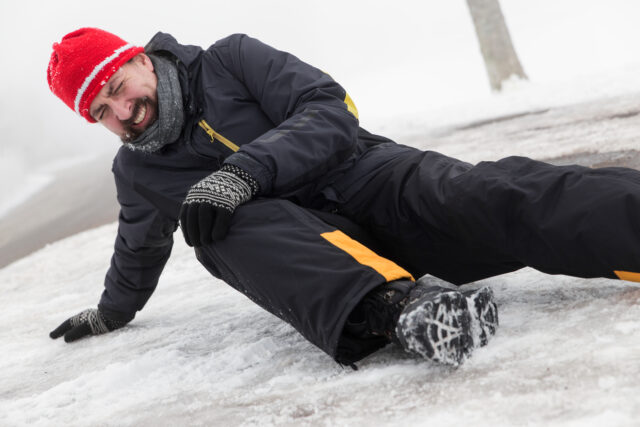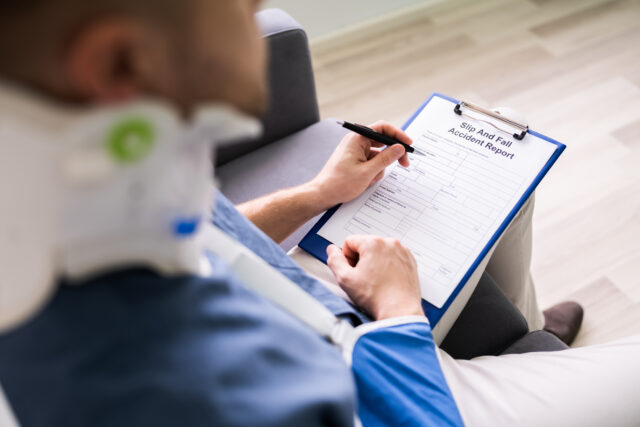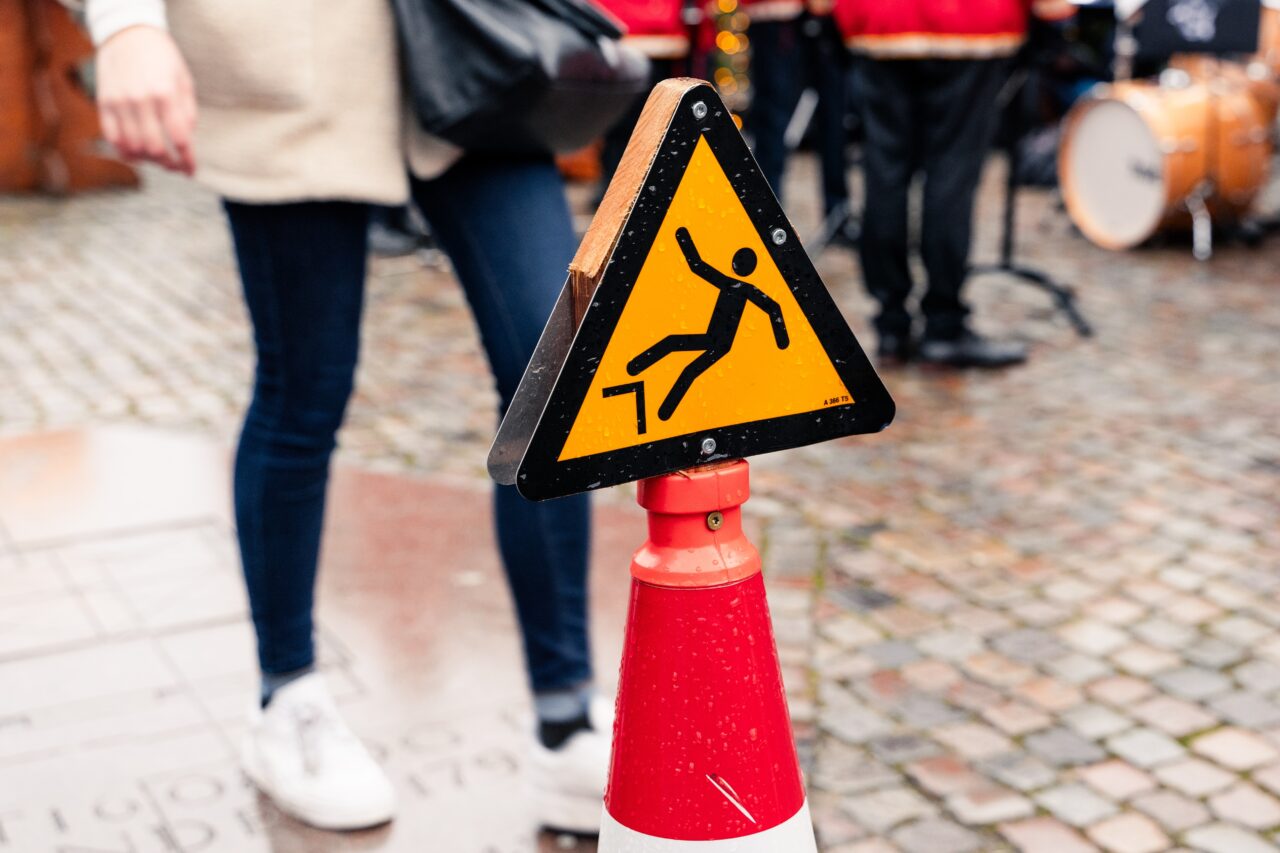If a property owner fails to remove snow and ice from their property, slip-and-fall accidents can occur. If you suffered injuries in one of these accidents, you can file a claim or lawsuit for compensation. To do so, you must prove the owner’s negligence by failing to maintain safe conditions.
A skilled Rogers premises liability attorney can help by gathering evidence, such as photos, witness statements, and medical records, to support your claim. They will also negotiate with insurance companies for a fair settlement or represent you in court if necessary. With their knowledge and experience, you can ensure that your rights are protected and work toward securing compensation for medical bills, lost earnings, and pain and suffering.
Ways that Property Owners Are Negligent When It Comes to Snow and Ice Removal
Property owners have a responsibility to maintain safe conditions on their property, especially during winter months when snow and ice can create hazardous situations. Unfortunately, many property owners neglect this duty, leading to dangerous conditions for visitors and potential liability for accidents. There are several ways in which property owners can be negligent when it comes to snow and ice removal.
One common mistake is failing to clear walkways and parking areas promptly after a snowfall. In many areas, the law requires property owners to remove snow within a certain amount of time – often within a few hours after the snow stops falling. When owners neglect this duty, the accumulation of snow and ice can make walking dangerous, leading to slips and falls. Delaying snow removal increases the risk of injury, especially if temperatures drop and the snow turns to ice.
Another form of negligence is improperly treating icy surfaces. Many property owners rely solely on shoveling snow without using salt, sand, or other de-icing agents. While shoveling can remove snow, it does not address the problem of ice, which can form quickly as temperatures fluctuate. Without proper de-icing measures, icy patches remain, creating a hidden danger for pedestrians.
In some cases, property owners may fail to inspect their property regularly during winter storms. This oversight can lead to unnoticed ice buildup or areas where snow has drifted into paths, making them more treacherous. Regular checks allow property owners to address issues early before they cause harm.
Another form of negligence is not maintaining proper drainage. If gutters and downspouts are clogged with snow and ice, melting water may accumulate around walkways and entrances, refreezing into dangerous ice patches. Property owners must ensure that drainage systems are clear to prevent these hazards from forming.
Finally, some owners fail to properly mark hazardous areas or put up warning signs. For example, if a section of a walkway is particularly slippery, a sign or cone can alert people to be cautious. Not providing these warnings can contribute to accidents – especially if visitors are not aware of the risks.
Types of Injuries in Slip-and-fall Accidents Resulting from Snow and Ice

Slip-and-fall accidents resulting from a property owner’s negligent failure to remove snow or ice can lead to a wide range of injuries. These injuries can vary in severity, depending on factors such as the victim’s age and how the fall occurs. The most common injuries from slip-and-fall accidents during winter conditions are fractures, sprains, head injuries, back and spinal injuries, and soft tissue damage.
One of the most common injuries in slip-and-fall accidents is a fracture. When someone falls on ice or snow, they often try to break their fall by using their hands or arms, which can lead to wrist, arm, or shoulder fractures. Hip fractures are also common, particularly among older adults. A hip fracture can be especially serious, often requiring surgery and leading to long-term disability or even death in some cases.
Sprains and strains are also frequent injuries in slip-and-fall accidents. These occur when ligaments or muscles are stretched or torn due to the sudden impact of the fall. A sprained ankle or knee is particularly common when people slip on icy sidewalks or driveways. These injuries can be painful and take weeks or even months to heal, requiring physical therapy for full recovery.
Head injuries are another serious concern in slip-and-fall accidents, particularly when the victim falls backward and strikes their head on the ground. These injuries include concussions and more severe brain injuries, which can have lasting effects on a person’s cognitive abilities and overall health. Even a seemingly minor bump on the head should not be ignored, as it can lead to symptoms like dizziness, nausea, and memory problems.
Back and spinal injuries are also common when someone falls in winter conditions. A sudden impact on the back or spine can result in sprains, strains, or even more serious injuries like herniated discs or fractured vertebrae. These types of injuries can cause chronic pain and may require long-term treatment, including surgery in some cases.
Finally, soft tissue injuries like bruises, contusions, and cuts are also common in slip-and-fall accidents. While they may not be as severe as fractures or head injuries, they can still cause pain and may require medical attention, especially if the cuts or bruises become infected.
How to Prove a Slip-and-Fall Accident Claim Where a Property Owner Failed to Remove Snow or Ice
Proving a slip-and-fall accident claim where a property owner negligently failed to remove snow or ice requires showing that the property owner was responsible for maintaining safe conditions and failed to do so. To succeed in such a claim, the victim must establish several key elements: negligence, hazardous conditions, notice, and causation. Here are the steps to prove a slip-and-fall case involving snow and ice.
Establishing Duty of Care:
The first step is showing that the property owner had a legal duty to keep the property safe. Property owners are generally required to remove snow and ice from walkways, parking lots, and other areas where people may walk. This responsibility usually includes clearing snow in a timely manner and treating icy areas with salt or sand. The victim must prove that the property owner had control over the area where the accident occurred and was required to maintain it.
Proving Negligence:
Next, the victim must demonstrate that the property owner was negligent. Negligence occurs when the property owner fails to meet their duty of care. This can mean that they didn’t clear snow or ice in time, didn’t use de-icing materials, or failed to inspect the property for hazards after a snowstorm. Evidence such as photos of the icy conditions, witness testimony, or expert testimony on what should have been done can help prove negligence.
Showing Hazardous Conditions:
The victim must prove that the snow or ice created a dangerous condition. For example, icy patches on walkways, frozen puddles, or snow piles that block a path can all be considered hazardous. It’s important to gather evidence, such as photos or videos of the area where the fall occurred, to show that the property was unsafe.
Proving Notice:
In most cases, the victim must show that the property owner knew or should have known about the hazardous condition. If the ice or snow had been there for some time, the property owner may have had “constructive notice,” meaning they should have seen the problem and addressed it. If the snow or ice had just formed, then the victim must prove that the property owner had actual notice of the condition and failed to act promptly.
Causation and Injury:
Finally, the victim must prove that the fall directly caused their injuries. Medical records, witness statements, and expert opinions can establish that the accident led to the injuries sustained. Documentation of medical treatments, diagnostic tests, and any ongoing pain or disability can strengthen the claim.
With strong evidence and a clear timeline of events, an accident victim can build a solid case for compensation.
Losses You Can Recover in a Slip-and-Fall Accident Case Involving Ice or Snow
In a slip-and-fall accident claim where a property owner negligently failed to remove ice or snow, the injured party may be entitled to compensation for their various losses. These damages are meant to cover the physical, emotional, and financial losses the victim suffers as a result of the accident. The compensation can vary based on the severity of the injuries, the extent of negligence, and other factors. Below are the main compensable losses you may recover in such a claim.
- Medical Expenses: One of the most common damages in a slip-and-fall case is reimbursement for related medical expenses. This includes the cost of emergency treatment, hospital stays, surgery, doctor’s visits, physical therapy, prescription medications, and any other medical care related to the injuries. The victim can recover past and future medical expenses that directly result from the accident.
- Lost income: If the injury resulting from the slip-and-fall prevents the victim from working, they may be entitled to compensation for lost income. This includes earnings lost during the period of recovery, as well as any future earnings that may be lost due to long-term or permanent disability. If the victim’s ability to perform their job is impaired, compensation may also cover loss of earning capacity.
- Pain and Suffering: Pain and suffering damages are intended to compensate for the physical and emotional distress resulting from the injuries. This can include chronic pain, emotional trauma, anxiety, depression, and loss of enjoyment of life. While these damages are harder to quantify, a skilled slip-and-fall lawyer can put a value on the suffering endured due to the accident.
- Permanent Disability or Disfigurement: If the slip-and-fall results in permanent disability or disfigurement, the victim may be entitled to additional compensation. This includes compensation for the long-term effects of the injuries, such as reduced mobility, the need for ongoing care, or a permanent change in appearance.
- Emotional Distress: In some cases, the emotional toll of the accident can be severe. Victims may suffer from anxiety, depression, or post-traumatic stress disorder (PTSD). Compensation for emotional distress can help address these psychological injuries.
- Punitive Damages: In rare cases, if the property owner’s conduct was particularly reckless or malicious, the court may award punitive damages. These damages are designed to punish the at-fault property owner and deter similar behavior in the future.
How Can a Lawyer Help with Your Slip-and-Fall Accident Claim?

A knowledgeable premises liability attorney can be invaluable when pursuing a slip-and-fall accident case where a property owner negligently failed to remove ice or snow.
First, a slip-and-fall attorney will evaluate the details of your accident. They will assess whether the property owner was legally responsible for maintaining safe conditions and whether they failed to do so. By reviewing factors like the severity of the hazard, how long the ice or snow had been present, and whether the owner had been negligent, an attorney can determine if you have a strong case for damages.
Next, a skilled slip-and-fall attorney will conduct a thorough investigation to gather evidence that supports your claim. This may include visiting the location of the accident to take photographs of the ice or snow, speaking with witnesses who saw the incident, and reviewing any available surveillance footage. They may also work with experts to determine whether the conditions on the property were dangerous and whether the owner failed to take appropriate action.
In a slip-and-fall case, medical evidence is vital. A knowledgeable attorney will ensure that you have the necessary documentation to prove the extent of your injuries. This may include medical records, bills, and expert testimony from doctors who can explain how your injuries are related to the fall. They can also track future medical needs if your injuries require long-term treatment.
Insurance companies are often focused on minimizing payouts, and they may attempt to downplay your injuries or deny liability altogether. A skilled slip-and-fall lawyer knows how to negotiate with insurance adjusters and advocate on your behalf. They will make sure you receive a fair settlement that covers not just your current medical expenses but also lost income, pain and suffering, and other damages.
Finally, if a fair settlement cannot be reached, your attorney will be prepared to take your case to court. They will represent you during the legal proceedings, presenting evidence, questioning witnesses, and arguing your case before a judge or jury.
Talk with an Experienced Slip-and-Fall Attorney about Your Case Right Away
If you suffered injuries on someone else’s property in a slip-and-fall accident, you may be entitled to recover financial compensation. A skilled attorney will aggressively fight for your rights, pursue the compensation you deserve, and represent you during all legal proceedings. Contact a knowledgeable Rogers personal injury lawyer for more information and to discuss your case circumstances.

